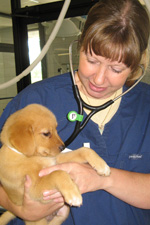|
Advocacy
|
Surgery Not Required?
Current and Future Options in Fertility Control of Dogs and Cats
November 24, 2014
 Are there viable non-surgical sterilization options for cats and dogs? iStockphotoThe number of dogs and cats euthanized in animal shelters in the United States has decreased from approximately 12-20 million per year to 3-4 million. That’s a 75-80 percent decrease in the U.S. euthanasia rate, according to figures from The Humane Society of the United States.
The incredible progress made in the battle against euthanasia in animal shelters could not have been made possible without the strong--and concerted--campaign to get the spay/neuter message out to the public. But surgery is expensive, and it requires general anesthesia, and can’t be done just anywhere. Imagine how much more progress could be made if sterilization was as easy as an injection. If we had an injectable sterilant, it would, hopefully, be cheaper than surgery, wouldn’t require general anesthesia, and could be delivered almost anywhere. In the past half-decade, there has been renewed interest in finding such a non-surgical means of sterilizing animals, particularly for feral or community cats, especially where there are limited resources to prevent them from reproducing.
More recently, the Food and Drug Administration has approved Zeuterin™, an injectable sterilant for male dogs between three and ten months of age. This is the first true non-surgical sterilant approved for use in dogs, and its use has sparked a lot of interest in the field of non-surgical sterilization. Zeuterin™ is a start, but many argue that until something effective comes along for females, non-surgical sterilization won’t really become mainstream. A significant amount of research is being done to find such a product, and there are several compounds that are being looked at. While they aren’t permanent sterilants, they show promise for long-term contraception of females (for more information, read our report from the 5th International Symposium on Non-Surgical Methods of Pet Population Control).
Join Amy Fischer, PhD, and G. Robert Weedon, DVM, MPH, Board Members of the Alliance for Contraception in Cats & Dogs (ACC&D), when they present an HSVMA webinar entitled, “Surgery Not Required: Current and Future Options in Fertility Control of Dogs and Cats.” This presentation will take place on Wednesday, December 10 from 8:00-9:30 p.m. ET (5:00-6:30 p.m. PT), and will discuss possible mechanisms for future non-surgical sterilant products, current emerging technologies available for long-term contraception in cats and dogs, as well as an overview of the currently approved product, Zeuterin™.
| Join us on December 10 for a discussion about cutting-edge non-surgical sterilization methods. Register now» |
|
|
Advocacy
|
Welfare of Michigan Wolves, Maine Bears in the Balance on Election Day
October 23, 2014
Election Day on Tuesday, November 4, will be an important day for American wildlife in two states—wolves in Michigan and bears in Maine. HSVMA has been involved in legislative advocacy efforts in both states on behalf of these animals and encourages our members in Michigan and Maine to support our efforts to protect wolves and bears and share information with colleagues, clients, friends and family on these critical animal welfare ballot initiatives.
For the Wolves of MICHIGAN: Vote "NO" on Proposals 1 and 2
Update: November 5, 2014
HSVMA joins Michigan veterinarians and other animal advocates in celebrating the defeat of Proposals 1 and 2 on Election Day, demonstrating that Michigan residents do not support a wolf hunt nor the attempt to transfer authority to the Natural Resources Commission to declare hunting seasons on protected species. Read more»
 Alamy AlamyWolves had been a protected species in Michigan for nearly fifty years after they were hunted to the brink of extinction. In 2012, despite their fragile population—according to a recent census, fewer than 650 wolves remain in Michigan--the Michigan legislature voted to allow their trophy hunting after wolves were removed from the endangered species list. Extreme forms of sport hunting wolves, including inhumane baiting and trapping, are now legal.
By the end of March 2013, more than 255,000 Michigan residents had registered their disapproval by signing a petition to overturn a sport hunt on wolves through the ballot referendum process. Despite this overwhelming show of citizen opposition, the Michigan legislature intervened; passing legislation that trumped the referendum process and allowed the trophy hunting of wolves to resume.
Two measures on the November 4 ballot will establish the sport hunting of wolves (Proposal 1), as well as deny Michigan voters a future say in this matter (Proposal 2). The intent of these proposals is to give political appointees and contributors—individuals who are neither scientists nor experts and who are unaccountable to voters--unchallenged decision-making power about these wildlife issues.
Keep Michigan Wolves Protected is a coalition of conservation groups, animal welfare organizations, Native American tribes, wildlife scientists, faith groups, veterinarians, hunters, farmers, and concerned Michigan citizens. Among its member organizations are the Detroit Audubon Society, the Detroit Zoological Society, the Michigan Chapter of the Sierra Club, National WolfWatcher Coalition, Sault Ste. Marie Tribe of Chippewa Indians, The Humane Society of the United States, ASPCA, HSVMA, and many local humane societies and rescue groups.
More than 130 veterinarians joined with HSVMA in opposition to the trophy hunting of Michigan wolves. View the full list»
If you are a Michigan resident, please Vote NO on Proposals 1 and 2. Say "NO" to the resumption of trophy hunting of wolves in Michigan and "NO" to the elimination of Michigan voters’ rights to a say in wildlife issues within your own state. And please take the time to encourage all of your Michigan colleagues, clients, friends and family members to join you in voting NO on Proposals 1 and 2. Visit NoOn1And2.com for more information»
For the Bears of MAINE: Vote "YES" on Question 1
Update: November 5, 2014
HSVMA joins Maine veterinarians and other animal advocates in expressing disappointment over the defeat of Question 1 on Election Day, which would have ended bear baiting, hounding and trapping. However, HSVMA appreciates the strong support of the veterinary community and more than a quarter million Mainers who did vote for the measure. Read more»
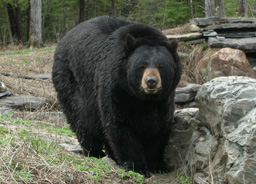 Megan Sewell/The HSUS Megan Sewell/The HSUSMaine remains the only state in the nation to allow all three cruel and unfair practices of bear trapping, hounding and baiting. These inhumane and unsporting techniques allow bears to be shot while they are trapped, treed and fed, respectively. They also endanger the dogs forced to chase them.
These techniques are scientifically indefensible. Wildlife biologists observe that baiting alters bear behavior by habituating bears to human food--increasing the chances of bear-human conflicts. Baiting also increases the bear population by supporting higher bear reproduction and cub survival rates. In just the last ten years alone, Maine’s bear population has grown by 30% and nuisance complaints have increased by 25%. Conversely, since prohibiting baiting and hounding 20 years ago, bear populations in Washington, Colorado and Oregon have actually stabilized.
These extreme methods have actually been quite unpopular with Maine hunters. The number of Mainers pursuing bears has been in a steady decline, with no more than 3% recently purchasing bear licenses. Instead, the hunt has primarily benefited a small number of guides and outfitters who guarantee bear kills to out-of-state trophy hunters in exchange for steep fees.
In 2013 opponents of these unsporting practices, yet again, pursued legislative efforts to end them. Unfortunately, the other side has remained unwilling to compromise. However, in just 121 days nearly 80,000 Mainers signed a citizen initiative petition, placing Question 1 on next month’s ballot to end these unsavory practices.
Mainers for Fair Bear Hunting is a nonprofit organization dedicated to establishing long-overdue protections for Maine’s bears and the dogs forced to chase them. They represent a broad coalition of hunters, environmental and animal organizations, animal shelters and rescue groups, veterinarians, businesses, community and faith leaders, and independent biologists. Their coalition partners include Wildlife Alliance of Maine, Great Bear Foundation, Maine Friends of Animals, Animal Refuge League of Greater Portland, International Fund for Animal Welfare, Center for Wildlife Ethics, Endangered Species Coalition, Maine Animal Coalition, ASPCA, The Humane Society of the United States and HSVMA.
Approximately 60 Maine veterinarians joined with HSVMA in supporting the elimination of bear trapping, baiting and hounding in the state. View the list of endorsers (scroll down to the "Veterinarians" section)»
If you are a Maine resident, please vote YES on Question 1. Say "YES" to ban baiting, hounding and trapping of bears for sport or trophy hunting in Maine. And please take the time to encourage all of your Maine colleagues, clients, friends and family members to also vote YES on Question 1. Visit YesOnQuestion1.com for more information» |
|
|
Advocacy
|
Euthanasia via Gas Chambers
October 22, 2014
by Michael J. Blackwell, DVM, MPH
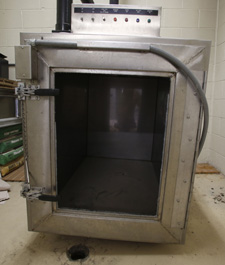 Should gas chambers be considered an acceptable form of euthanasia? Jim Urquhart/AP Images for The HSUSWhen veterinarians are consulted regarding the use of a gas chamber for euthanization of animals in shelters, too often the answer is, “Yes, it is okay, because gas chambers are included in the AVMA Guidelines for the Euthanasia of Animals.”1 However, the guidelines state, “Intravenous injection of a barbituric acid derivative is the preferred method for euthanasia of dogs, cats, other small animals, and horses.”
A careful read of the guidelines regarding carbon monoxide (CO) and carbon dioxide (CO2) gas chambers reveals some important information that should be considered when making a recommendation. The 2013 edition of the guidelines downgrades gas chambers from “acceptable” to “acceptable with conditions.” As explained by Dr. Gail Golab of the AVMA, “Techniques that are ‘acceptable with conditions’ may have a greater potential for operator error or safety hazard, are not well documented in the scientific literature, or may require a secondary method to ensure death. The use of these techniques requires that specific conditions be met to ensure that death is achieved in a humane way. When ALL of the conditions are met, ‘acceptable with conditions’ methods are equivalent to ‘acceptable’ methods.”2 Consequently, it is not advisable to support the use of gas chambers without knowing whether the “conditions for proper use” are being met.
The “conditions” for use of a gas chamber in a shelter setting generally cannot be met for two reasons:
- the status of the animals, and
- the inability to ensure administration of appropriate doses of the gases.
To the animals entering a shelter, it is a strange and unfamiliar environment that can be perceived as threatening. Thus, most animals in a shelter are not in a state of calm and relaxation that would be normal for them, for example, in a home environment or their natural habitat. In addition, many are physically ill or have been injured. Whether due to mental stress or physical abnormality, most animals in the shelter are compromised in ways that calls into question their ability to uptake gases at the proper rate to meet the “conditions” for a humane death. In these compromised states, the uptake and distribution of gases is not predictable. It is safe to assume that all wildlife is in a serious state of mental stress when presented to the shelter.
Any gas that is inhaled must reach a certain concentration in the lungs at a controlled rate before it can be effective in achieving a humane euthanasia. When multiple animals are placed in a gas chamber it is close to impossible for each one to receive the proper dose at the proper rate. One’s placement inside the chamber will determine, in part, how much gas and at what rate it is received. It is a haphazard euthanasia experience that can be prolonged, painful, and ineffective. In stark contrast, euthanasia by injection of approved drugs can be done with a precision that ensures proper dosing, resulting in a humane death.
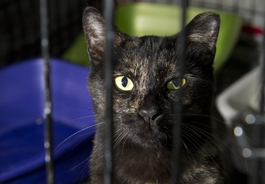 "Without doubt, euthanasia by injection is more humane than gas in a shelter setting." Julie Busch Branaman for The HSUSThe excellent Euthanasia Reference Manual3 is a practical and comprehensive resource for veterinarians, euthanasia technicians, and others. It acknowledges, “No one wants to perform euthanasia, but people who take on this emotional and unwelcomed task owe it to the animals to do it well…. this manual serves as the definitive basic education tool for understanding the methods of humanely ending an animal’s life…” As expanded upon in the manual, pre-euthanasia drugs can be critical to a humane death. “Ideally, every animal scheduled for euthanasia could be gently restrained for direct IV or IP injection of sodium pentobarbital. However, in reality not every animal can be safely handled with gentle physical restraint, and in some cases animals are so unsocialized or fearful that attempts at physical handling would sharply increase their level of stress. For those animals, pre-euthanasia drugs should be administered to render them unconscious before the lethal injection of sodium pentobarbital. Availability of the proper pre-euthanasia drugs and proper training regarding their use are therefore integral to the success of any euthanasia protocol.” Veterinarians are reminded that we must help facilitate access to pre-euthanasia drugs when indicated to ensure a humane death.
The manual also correctly points out, “No matter how frequently or infrequently euthanasia is performed in a facility, no other component of shelter work is as consequential or will be as carefully scrutinized by the public.” Without doubt, euthanasia by injection is more humane than gas in a shelter setting.
 James Berglie for The HSUS James Berglie for The HSUSDr. Michael Blackwell has had a distinguished career in public service and as an educator. He was educated at Tuskegee University in Alabama, obtaining both a Bachelor of Science degree and a doctorate of veterinary medicine. After private veterinary practice, he took a post with the Food and Drug Administration’s Center for Veterinary Medicine. During his 20 years with the FDA, Blackwell served in both its human and veterinary medicine branches.
From 1994 to 1998, Dr. Blackwell served as the chief veterinarian of the United States Public Health Service. In this role, he was the chief advisor to the Surgeon General of the United States. In 1997, he was promoted to the rank of Assistant Surgeon General (Rear Admiral) of the Commissioned Corps of the U.S. Public Health Service.
Blackwell left the Office of the Surgeon General to become the dean of the College of Veterinary Medicine at the University of Tennessee in Knoxville. He led the college for eight years, during which he aggressively promoted the role of veterinary medicine in public health and also served as vice chair of the Pew Commission on Industrial Farm Animal Production from 2006 through 2008. He followed that experience by working to reorganize the animal shelter for the Knoxville region.
He is currently the Senior Director of Veterinary Policy and chief veterinary spokesperson for The Humane Society of the United States. He also serves on the HSVMA Board of Directors. Read his full biography»
REFERENCES
- The American Veterinary Medical Association, Guidelines for the Euthanasia of Animals (2013 Edition), https://www.avma.org/KB/Policies/Pages/Euthanasia-Guidelines.aspx
- Gail Golab, Euthanasia Guidelines: The Gas Chamber Debate, AVMA@Work Blog, http://atwork.avma.org/2013/02/26/euthanasia-guidelines-the-gas-chamber-debate/, February 2013.
- The Humane Society of the United States, Euthanasia Reference Manual, http://www.animalsheltering.org/resources/all-topics/euthanasia/euthanasia-reference-manual.pdf, 2013.
|
|
Advocacy
|
Paving the Road
Shelter Medicine as a Veterinary Specialty
Spetember 16, 2014
by Brenda Griffin, DVM, MS, DACVIM and Kate Hurley, DVM, MPVM
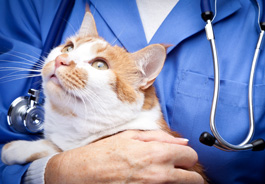 Earlier this year, Shelter Medicine was formally granted provisional recognition as a veterinary specialty. Bill Oxford/iStockphotoShelter Medicine—Today, people have heard the term, but just ten years ago it was not so familiar, and still today we are explaining it to many of our colleagues. Frankly, it has been a whirlwind over the past decade—the formal discipline of Shelter Medicine has rapidly emerged as a distinct area of specialization in veterinary medicine in a very short time. Like many who have worked with animal shelters for some years, it didn’t take either of us very long in this field to realize that Shelter Medicine is unique. It demands an unprecedented specialized veterinary approach that blends the best of both population and individual animal medicine with an ultimate goal of improving animal welfare. In fact, we quickly learned that the practice of Shelter Medicine requires special focused expertise in the context of very unique and challenging environments.
Ten years ago, the two of us exchanged emails and phone calls, often scratching our heads, searching for answers, trying to understand what “good medicine” was in the context of an animal shelter. And, as we delved deeper into shelter practice, we realized how great the gaps were in our own training and how difficult it was to identify and integrate optimal practices into the context of shelters. Just as many veterinarians working in shelters did, we saw that enhancing animal welfare and meeting the needs of animals and people in the community required a broad range of expertise in population wellness, infectious disease control, behavioral care, high quality, high volume spay-neuter, triage, epidemiology, and shelter management, among others. Consulting with others in the field, it became clear to us that a specialist in shelter medicine must be capable of responding to the needs of shelters ranging from large open admission facilities to small home-based rescue organizations, as well as every permutation in between providing care for homeless animals. We recognized that shelter patients present diverse populations and challenges, necessitating a thorough understanding of facility design and operations, population management, resource allocation, risk analysis and welfare, as well as strategies for control of companion animal overpopulation, public health protection, and disaster and cruelty response. Surely, a specialty would help to bridge the gaps and advance the body of knowledge necessary to provide optimal care in this challenging context.
In 2007, both of us served on the board of directors of the Association of Shelter Veterinarians and along with the board, we began to explore the possibility of creating a Shelter Medicine specialty. On the advice of the American Board of Veterinary Specialties, we set out to conduct a formal “job task analysis” to define the aspects of veterinary practice that are crucial to the care and management of shelter animals. With the assistance of Dr. Jeanette O’Quin, who was a key organizer of the effort, a professionally-mediated job task analysis was conducted, and subsequently validated the following year through a survey of the ASV membership. The analysis defined major categories of duties for a Shelter Medicine Specialist including: optimizing shelter animal physical health, optimizing shelter animal behavioral health, protecting community and public health, addressing animal cruelty/abuse/neglect, alleviating companion animal homelessness, facilitating animal shelter management, serving as a resource on animals and public policy, and advancing shelter medicine. This would ultimately serve as the foundation for our petition for the proposed specialty in Shelter Medicine.
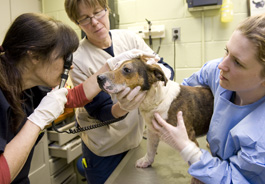 The Shelter Medicine specialty will help improve veterinary care provided to shelter animals and advance competency and scientific progress in the field. Michelle Riley/The HSUSIn 2009, ASV formally appointed an Organizing Committee for the development of an AVMA-approved specialty in Shelter Medicine, and we were named as the co-chairs of this effort. We firmly believed that a specialty in Shelter Medicine Practice would elevate the field, create organized training and certification pathways for veterinarians, and ultimately serve to establish veterinarians as leaders in providing quality care for the millions of companion animals passing through U.S. shelters each year. Over the following years, we worked with our dedicated committee members to define the unique professional knowledge and skills required, establish standards for training, research existing recognized veterinary specialty organizations, and conduct surveys of veterinary curricula and veterinary employment in shelters. Ultimately, we recognized that the discipline of Shelter Medicine would be well suited to one existing specialty board: the American Board of Veterinary Practitioners. ABVP is the only specialty organization in which Diplomates demonstrate excellence in the care of the total patient relevant to the context in which the practice is occurring. It is not a system-based specialty like dermatology or cardiology, but instead represents a holistic, comprehensive approach to the patient—a perfect fit for a shelter specialist.
With the approval of ABVP and a lot of hard work and assistance from our committee, we submitted a formal petition for provisional recognition of a veterinary specialty in Shelter Medicine Practice under the ABVP to the AVMA’s American Board of Veterinary Specialties in November 2012. Following the required review process, the ABVS enthusiastically recommended provisional recognition of the new specialty. In April 2014, the AVMA’s Executive Committee formally conferred provisional recognition of ABVP-SMP. ABVP will accept the first credentialing applications for its newest practice category this fall. The first certifying exam will take place in 2015. View the full petition»
We are excited as we consider the future of our specialty. Ultimately we hope it will improve the veterinary care provided to shelter animals and advance competency and scientific progress in our field. We smile now as we hear veterinary students talking about shelter medicine as though it has always existed. We know that the last generation of shelter practitioners has worked tirelessly to blaze a trail that the new generation can follow – and we are so grateful to have been entrusted to help pave some of this road. Paving is an important step—one that we believe will not only ensure that the road remains, but that in time will help expand it into a super highway. Congratulations to all of us in this field—together we did it, and it’s official: Shelter Medicine is a recognized veterinary specialty.
Brenda Griffin, DVM, MS, DACVIM
Dr. Griffin is a 1990 graduate of the University of Georgia College of Veterinary Medicine. After completing an internship at the MSPCA’s Angell Memorial Animal Hospital in 1991, she spent time working in general small animal practice as well as in animal shelters before pursuing a residency in small animal internal medicine at Auburn University. For the past 15 years, Dr. Griffin has used her expertise in small animal internal medicine and her passion for shelter animals to assist in the development of training and research programs that support the field of Shelter Medicine. Her professional interests surround feline medicine, population health, behavioral wellness, and sterilization programs. She has published numerous articles and book chapters on these topics. While a member of the faculty of the Scott Ritchey Research Center, Dr. Griffin co-founded the Alliance for Contraception in Cats and Dogs. She later served on the Association of Shelter Veterinarians’ Task Force to Advance Spay-Neuter, as well as the Shelter Standards Task Force. In 2000, she was named by the AVMA as the Bustad Companion Animal Veterinarian of the Year. She currently co-instructs courses in shelter medicine at both the University of Florida and the University of Georgia, and serves as the Regent for the new specialty in Shelter Medicine: ABVP- SMP.
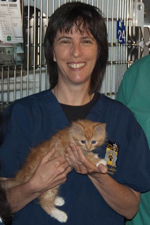 UC Davis UC DavisKate Hurley, DVM, MPVM
Kate Hurley is the director of the UC Davis Koret Shelter Medicine Program. Dr. Hurley began her career as an animal control officer in 1989. After graduation from the UC Davis School of Veterinary Medicine in 1999, she worked as a shelter veterinarian in California and Wisconsin. In 2001, she returned to UC Davis to become the first in the world to undertake a residency in Shelter Medicine. Following completion of the residency, Hurley became the director of the UC Davis Koret shelter medicine program. Two of her proudest achievements are co-authoring the “Association of Shelter Veterinarians’ Guidelines for Standards of Care in Animal Shelters” and co-editing the textbook “Infectious Disease Management in Animal Shelters”. She loves all things shelter-related, but her particular interests include welfare of confined dogs and cats, humane and effective strategies to manage community cats, infectious disease, and unusually short dogs. She loves shelter work because it has the potential to improve the lives of so many animals and the people who work so hard to care for them. |
|
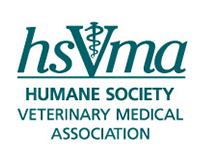
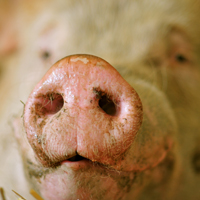
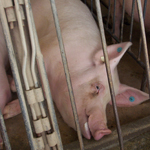

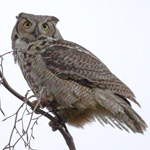
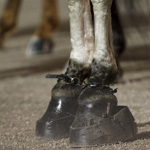
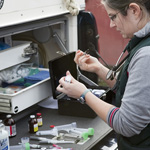 Julie Austin/ jaustinphotography.com
Julie Austin/ jaustinphotography.com




 James Berglie for The HSUS
James Berglie for The HSUS

